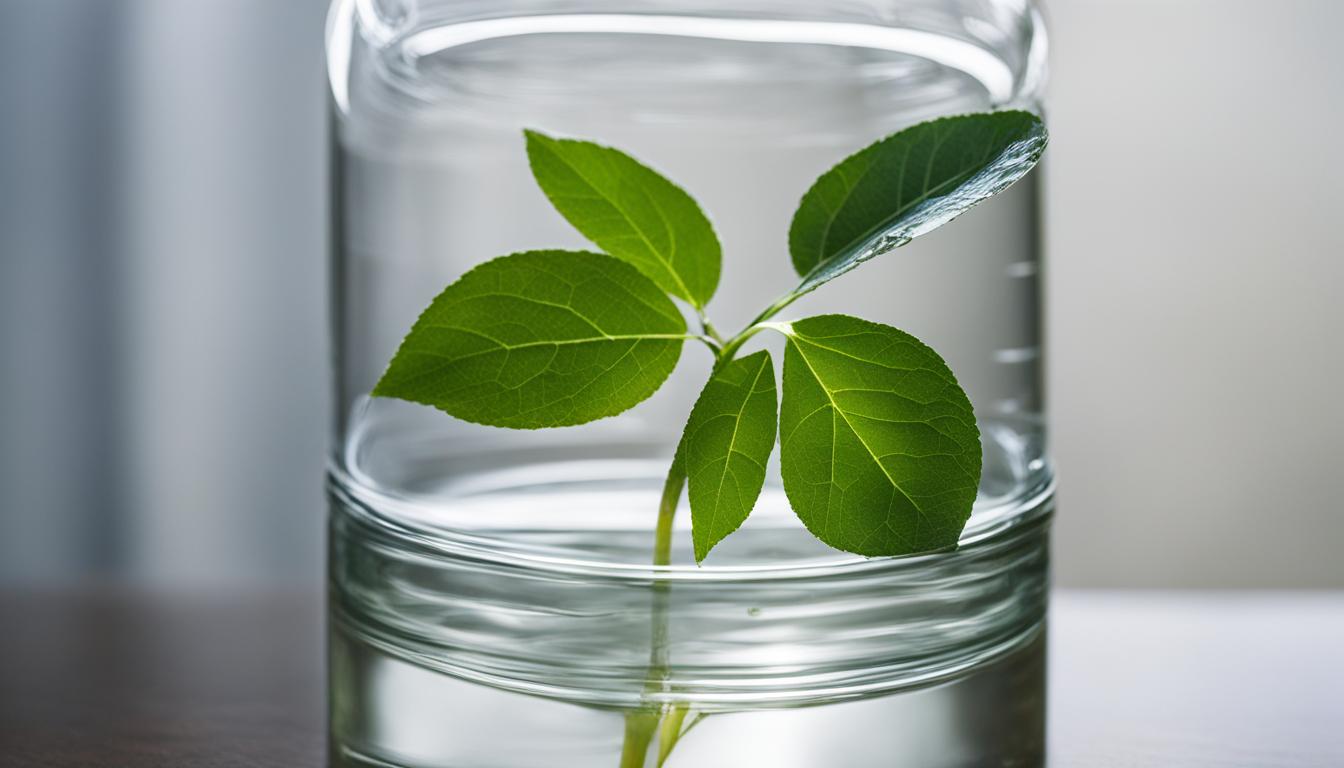
Houseplants have the remarkable ability to turn any house or apartment into the indoor jungle of your dreams. They warm up any room and are great for the mind, body, and soul.
Houseplant propagation can be a great way to multiply your houseplants and learn more about them. There are several plant propagation methods, including dividing, rooting a leaf, and rooting a cutting.
Key Takeaways:
- Propagation is a great way to multiply your houseplants and learn more about them.
- Plant propagation methods include dividing, rooting a leaf, and rooting a cutting.
- Dividing houseplants involves splitting one plant into two or more.
- Rooting a leaf involves cutting or pulling off a leaf from the existing plant and allowing it to dry before planting it in fresh potting soil.
- Rooting a cutting can be done in water or soil.
Dividing Houseplants
Dividing houseplants is a popular propagation method that enables you to multiply your plant collection and promote healthier growth. It involves splitting one plant into two or more sections, each with its own root system. The best time to divide houseplants is in the spring when they have come out of their rest and are entering a period of active growth.
Some houseplants that are well-suited for dividing include spider plants and sansevierias. These plants are known for their ability to produce offsets or clumps of new growth around the base. Dividing these plants allows you to separate these offsets and create new, individual plants.
The process of dividing houseplants is relatively straightforward. Start by carefully removing the plant from its pot, being mindful of the root system.
Next, identify healthy sections with roots and use a sharp, clean knife or gardening shears to cut the plant into sections. Make sure each section has an adequate amount of roots. Finally, replant the new divisions in fresh, well-draining potting soil, and water them thoroughly.
| Houseplants suitable for dividing | Best time to divide |
|---|---|
| Spider plants | Spring |
| Sansevierias | Spring |
Dividing houseplants is an effective way to expand your indoor garden and share plant babies with friends and family. It’s a rewarding process that not only enhances the beauty of your home but also allows you to gain a deeper understanding of plant growth and propagation. So the next time you notice your houseplants becoming crowded, don’t hesitate to give dividing a try!
Rooting a Leaf
Rooting a leaf is a popular method of plant propagation, particularly for plants that can be propagated from leaves. This method involves cutting or pulling off a leaf from the existing plant and allowing it to dry before planting it in fresh potting soil.
The leaf should be selected from a healthy plant with no signs of disease or damage. Once the leaf has been removed, it is important to let it dry for a few days to allow the cut end to callus over. This helps to prevent rotting when the leaf is planted.
After the leaf has dried, it can be planted in a small pot filled with well-draining potting soil. The leaf should be inserted into the soil, cut end down, and lightly covered with soil. It’s important to keep the soil slightly moist but not overly wet, as too much moisture can lead to rotting.
Place the potted leaf in a warm, bright location, but avoid direct sunlight as it can scorch the delicate leaf. Rooting a leaf can be a bit tricky, and not every leaf will successfully root. However, with patience and proper care, you may see new roots and even a new baby plant emerging from the leaf.
Plants that can be propagated from leaves
| Plant | Scientific Name |
|---|---|
| Sansevieria | Sansevieria spp. |
| Jade Plant | Crassula ovata |
| ZZ Plant | Zamioculcas zamiifolia |
| Peperomia | Peperomia spp. |
These are just a few examples of plants that can be propagated from leaves. The process may vary slightly depending on the plant species, so it’s always a good idea to do some research on the specific plant you are propagating.
Leaf propagation can be a rewarding way to expand your plant collection and share plants with friends. Plus, there’s something truly magical about watching a new plant grow from a single leaf!
Rooting a Cutting
Rooting a cutting is a popular method of plant propagation that involves taking a stem cutting from a parent plant and encouraging it to develop roots, ultimately creating a new plant.
It is a rewarding and relatively simple technique that can be used with a variety of houseplants. By following a few key steps, you can successfully propagate your indoor plants and expand your green collection.
To root a cutting, start by selecting a healthy stem from the parent plant. It’s important to choose a stem that is free from disease, pests, or damage.
Using clean and sharp pruning shears, make a clean cut just below a node, which is the point where a leaf or bud is attached to the stem. Nodes contain the necessary cells for root development.
Once you have obtained the cutting, you have two main options for rooting it: water propagation or soil propagation. In water propagation, place the cutting in a clean glass or jar filled with water, ensuring that the bottom nodes are submerged.
Change the water every few days to prevent the growth of bacteria and mold. After a few weeks, roots should start to form. At this point, you can transfer the cutting to a pot filled with well-draining potting soil.
In soil propagation, dip the cut end of the stem in rooting hormone powder to encourage root growth. Then, plant the cutting in a small pot filled with moist potting soil.
Cover the pot with a plastic bag or use a propagating dome to create a humid environment that will promote root development. Place the pot in a warm and bright location, but avoid direct sunlight. Keep the soil consistently moist, not soggy, until roots are established.
Rooting a cutting is an effective method of plant propagation, allowing you to create new plants from your existing collection. Some of the houseplants that can be propagated from stem cuttings include pothos, Chinese evergreen, dracaena, diffenbachia, and philodendron. Experiment with this method and discover the joy of watching your cuttings grow into thriving plants.
Propagation methods comparison: soil vs. water
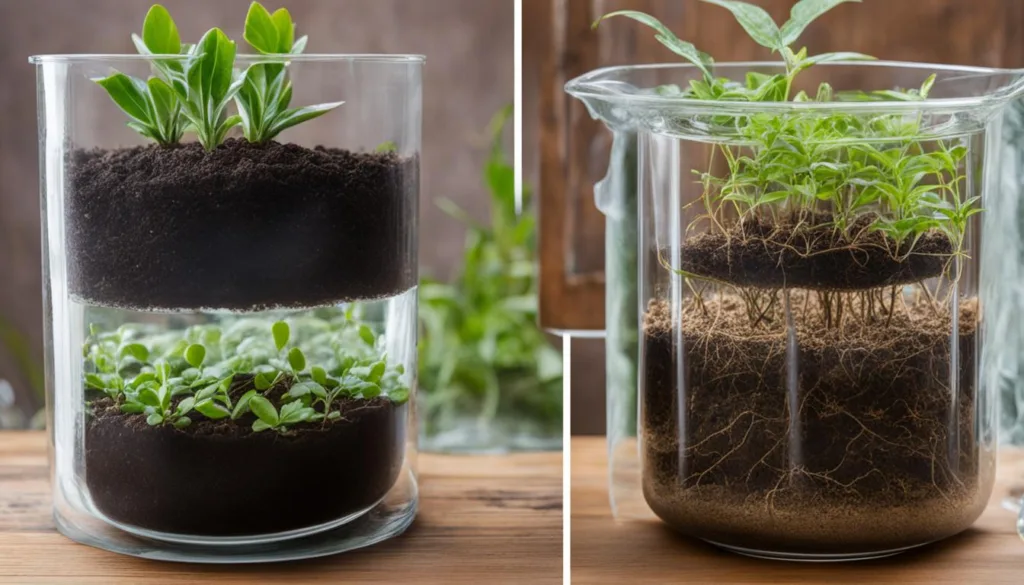
When it comes to propagating indoor plants, there are two main methods to choose from: soil propagation and water propagation. Each method has its own set of advantages and disadvantages, and understanding the differences between them can help you determine which one is right for you.
Soil propagation
Soil propagation involves planting the cuttings directly in potting soil. This method is generally easier to manage and requires fewer steps compared to water propagation.
It allows the cuttings to establish roots and grow in a more natural environment, similar to how they would in a traditional potted plant. Soil propagation is ideal for plants that prefer a well-draining medium and can tolerate slightly drier conditions.
Water propagation
Water propagation, on the other hand, requires placing the cuttings in a container filled with water. This method is quicker and doesn’t require access to soil. It allows you to easily observe root development and monitor the progress of your cuttings.
Water propagation is particularly suitable for plants that thrive in high humidity and moist environments. However, it’s important to note that not all plants can be successfully propagated in water, and some may require a transition to soil at a later stage.
Pros and cons of soil and water propagation
Here is a table summarizing the pros and cons of soil and water propagation:
| Method | Pros | Cons |
|---|---|---|
| Soil propagation |
|
|
| Water propagation |
|
|
Ultimately, the choice between soil and water propagation depends on the specific needs and preferences of your plants, as well as your own personal preferences as a gardener. Experimenting with both methods can help you discover which one works best for you and your indoor plants.
Propagating Equipment for Successful Indoor Plant Propagation
When it comes to propagating indoor plants, having the right equipment can greatly increase your chances of success. While some basic tools like scissors and plant pots are often sufficient, there are a few essential items that can take your propagation journey to the next level. Two key equipment options that you may want to consider are rooting hormone and a propagating mat.
Rooting Hormone
Rooting hormone is a powdered substance that can significantly improve the success rate of your propagation efforts. It contains growth hormones that stimulate root formation and enhance the chances of the cutting successfully developing its own roots.
To use rooting hormone, simply dip the cut end of your plant cutting into the powder before placing it in soil or water. This simple step can greatly increase the chances of successful root development, especially for more challenging plant varieties.
Propagating Mat
A propagating mat is a specialized heating mat that provides a controlled temperature environment for your plant cuttings. Many indoor plants thrive in warm and humid conditions, and a propagating mat can mimic these optimal conditions.
By providing gentle bottom heat to your cuttings, the mat encourages faster root growth and overall plant development. This can lead to healthier and stronger plants in less time. Additionally, propagating mats are often adjustable, allowing you to set the desired temperature for different plant varieties.
| Equipment | Benefits |
|---|---|
| Rooting Hormone |
|
| Propagating Mat |
|
While rooting hormone and a propagating mat can greatly enhance your propagation efforts, it’s important to note that they are not always necessary. Many indoor plants can be successfully propagated using basic tools and natural environmental conditions. However, if you’re looking to increase your success rate or want to propagate more challenging plant varieties, investing in these tools can be well worth it.
Propagation Methods: Offsets, Plantlets, Stem and Cane Cuttings, Leaf Cuttings, Layering, Division, and Seed Sowing
When it comes to propagating houseplants, there are several methods you can use depending on the type of plant and your preference. Each method has its own unique process and requirements. Let’s explore the different propagation methods in detail:
Offsets
Offsets are side shoots or new growths that develop around the base of a plant. These can be separated from the parent plant and replanted to produce new individual plants.
Some examples of plants that can be propagated through offsets include spider plants and bromeliads. To propagate through offsets, gently remove them from the parent plant and plant them in their own pots with well-draining soil.
Plantlets
Plantlets are miniature plants that develop on the flowering stems of certain plants. They can be detached from the parent plant and planted as new individual plants.
Examples of plants that produce plantlets include spider plants and air plants. To propagate with plantlets, wait until they are mature and starting to develop roots, then carefully detach them from the parent plant and plant them in their own pots.
Stem and Cane Cuttings
Stem and cane cuttings involve taking a portion of the stem or cane from a plant and rooting it to create a new plant. This method is commonly used for plants like pothos and philodendron.
To propagate with stem or cane cuttings, select a healthy stem or cane and cut it just below a node. Remove any leaves from the lower portion of the cutting and place it in a container with water or plant it directly in well-draining soil. Keep the cutting in a warm and humid environment until roots develop.
Leaf Cuttings
Leaf cuttings involve taking a single leaf from a plant and propagating it to create a new plant. This method is commonly used for plants like sansevierias and jade plants.
To propagate with leaf cuttings, gently remove a healthy leaf from the parent plant and allow it to dry for a few days. Once the leaf has dried, place it in a container with water or plant it directly in well-draining soil. Keep the cutting in a warm and humid environment until new roots and shoots emerge.
Layering
Layering is a method where a stem from a plant is encouraged to root while still attached to the parent plant. Once roots have formed, the stem is separated from the parent plant and replanted.
This method is commonly used for climbing plants like pothos and philodendron. To propagate through layering, select a healthy and flexible stem and make a small cut or wound near a node.
Gently bend the stem and place the wounded portion in contact with soil. Keep the soil moist and wait for roots to develop. Once roots have formed, separate the new plant from the parent plant and plant it in its own pot.
Division
Division involves dividing a mature plant into multiple sections, each with its own roots and growth points. This method is commonly used for plants like hostas and ferns.
To propagate through division, carefully remove the plant from its pot and gently separate the roots into sections. Make sure each section has enough roots and growth points to sustain itself. Plant each section in its own pot with well-draining soil.
Seed Sowing
Seed sowing is the process of planting seeds and allowing them to germinate and grow into new plants. This method is commonly used for a wide variety of plants. To propagate through seed sowing, sow the seeds in a seed tray or small pots filled with well-draining soil.
Keep the soil moist and provide the seeds with adequate light and warmth for germination. Once the seedlings have developed, transplant them into their own pots.
By understanding and utilizing these propagation methods, you can successfully multiply your houseplant collection and enjoy the rewarding experience of watching new plants grow. Experiment with different methods to find the ones that work best for your plants and preferences. Happy propagating!
Suitable houseplants for each propagation method
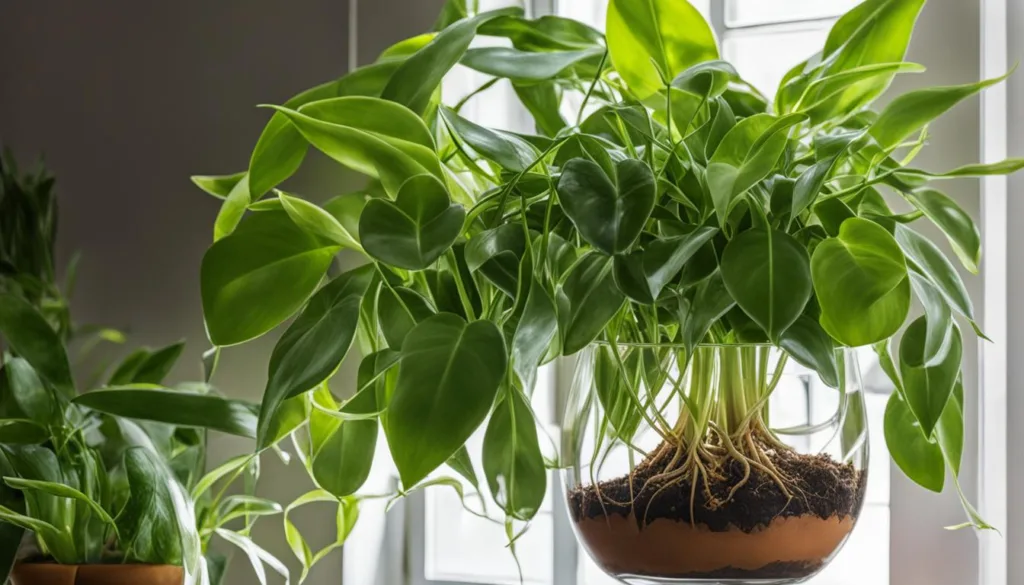
Propagating houseplants is an exciting way to expand your indoor garden and explore different propagation techniques. Each method has specific houseplants that are well-suited for successful propagation. Whether you’re dividing, rooting a leaf, or taking a cutting, here are some examples of suitable houseplants for each propagation method:
Dividing:
– Spider plants (Chlorophytum comosum)
– Sansevierias (Snake plants)
– Peace lilies (Spathiphyllum)
– Aloe vera
Rooting a leaf:
– Jade plants (Crassula ovata)
– ZZ plants (Zamioculcas zamiifolia)
– Peperomia
– African violets (Saintpaulia)
Rooting a cutting:
– Pothos (Epipremnum aureum)
– Wandering jew (Tradescantia zebrina)
– Philodendron
– Chinese evergreen (Aglaonema)
These are just a few examples of suitable houseplants for each propagation method. It’s important to research and understand the specific requirements of each plant before attempting propagation.
With proper care and patience, you can successfully propagate a wide variety of houseplants and enjoy the satisfaction of watching them grow and thrive.
| Propagation Method | Example Houseplants |
|---|---|
| Dividing | Spider plants, Sansevierias, Peace lilies, Aloe vera |
| Rooting a leaf | Jade plants, ZZ plants, Peperomia, African violets |
| Rooting a cutting | Pothos, Wandering jew, Philodendron, Chinese evergreen |
Remember to provide the proper care and environment for your propagated plants to increase their chances of success. Each propagation method requires specific conditions, such as soil moisture, light levels, and temperature.
By understanding the needs of your houseplants and selecting the appropriate propagation method, you can enjoy the rewarding process of propagating and expanding your indoor plant collection.
Conclusion: Give propagation a try!
Propagating houseplants can be a rewarding and enjoyable experience. There are several benefits to propagation, making it well worth giving it a try. Not only does propagation allow you to multiply your plant collection, but it also provides an opportunity to learn more about your plants and save money in the process.
By propagating your houseplants, you can effectively create new plants that are genetically identical to the parent plant. This means you can expand your indoor garden without having to purchase new plants. It’s a cost-effective way to fill your home with greenery and create a lush and vibrant environment.
Moreover, propagation allows you to deepen your understanding of your plants. Through the process of dividing, rooting a leaf, or taking a cutting, you can gain valuable insights into the growth patterns and unique characteristics of your houseplants. It’s like unlocking the secrets of nature right in your own home.
So don’t hesitate to give propagation a try! Whether you’re a seasoned plant enthusiast or just starting your indoor gardening journey, propagation is a fascinating and educational endeavor.
With the right techniques and a little patience, you can witness the miracle of new life emerging from your beloved houseplants. Start exploring the world of propagation and watch your indoor jungle thrive!
FAQ
How do I divide houseplants?
To divide houseplants, remove the plant from the pot, identify healthy sections with roots, cut the plant into sections, and replant the new divisions in well-draining potting soil.
When is the best time to divide houseplants?
Spring is the best time for dividing houseplants because plants have come out of their rest and are ready to start growing again.
Which plants can be divided?
Some plants that are easy to divide are spider plants and sansevierias.
How do I root a leaf?
To root a leaf, cut or pull off a leaf from the existing plant, allow it to dry, and then plant it in fresh potting soil.
Which plants can be propagated from leaves?
Some plants that can be propagated from leaves are sansevierias, jade plants, ZZ plants, and peperomia.
How do I root a cutting?
To root a cutting, take a cutting just below where the leaf meets the stem, at a node, and either place it in water or plant it directly in well-draining potting soil.
Which plants can be propagated from stem cuttings?
Some plants that can be propagated from stem cuttings include pothos, Chinese evergreen, dracaena, diffenbachia, and philodendron.
What is the difference between soil and water propagation methods?
The soil method involves planting the cutting directly in potting soil, while the water method involves placing the cutting in a container with water.
What equipment do I need for propagation?
Basic tools like scissors and plant pots are often sufficient, but using rooting hormone powder and a heated propagating mat can increase the chances of success.
What are the different propagation methods?
The different propagation methods include offsets, plantlets, stem and cane cuttings, leaf cuttings, layering, division, and seed sowing.
Which houseplants are suitable for each propagation method?
Spider plants and sansevierias are suitable for dividing, jade plants and ZZ plants can be propagated from leaves, and pothos and wandering jew can be propagated from stem cuttings.

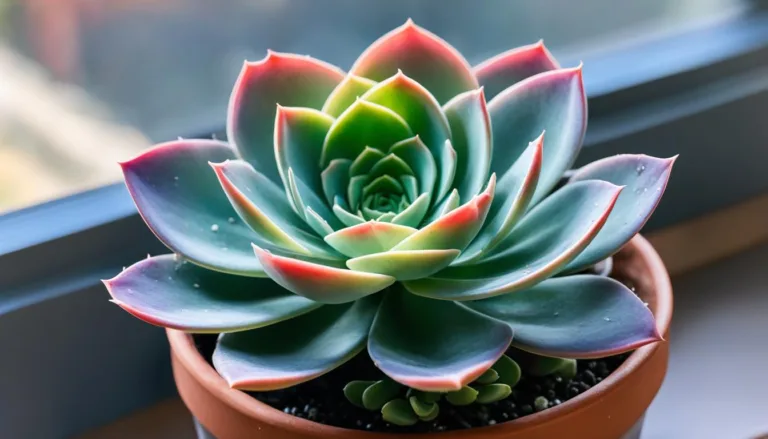
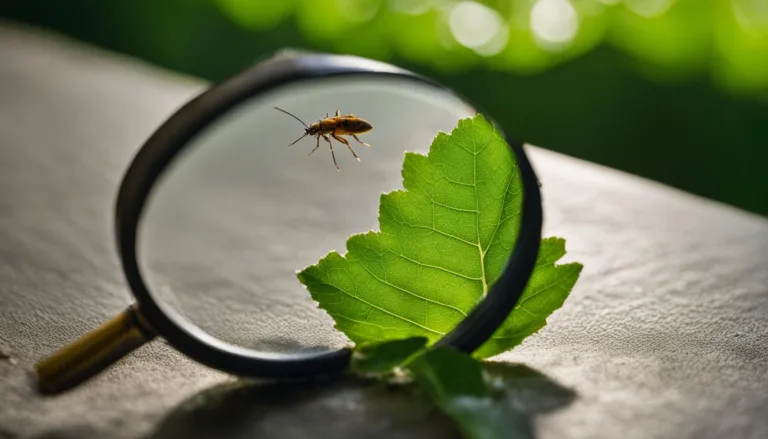
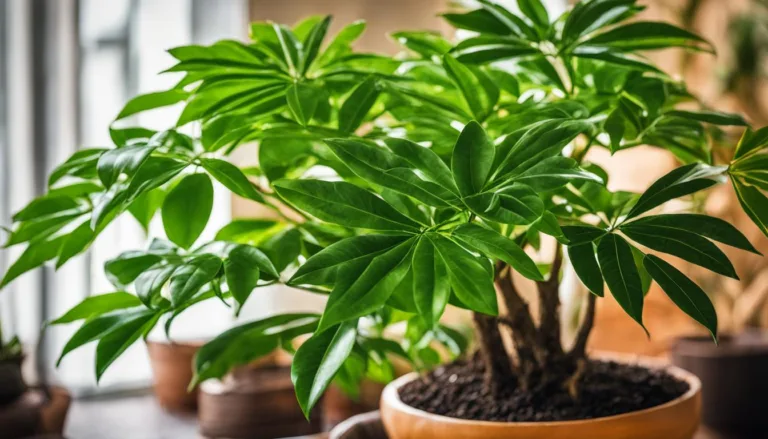
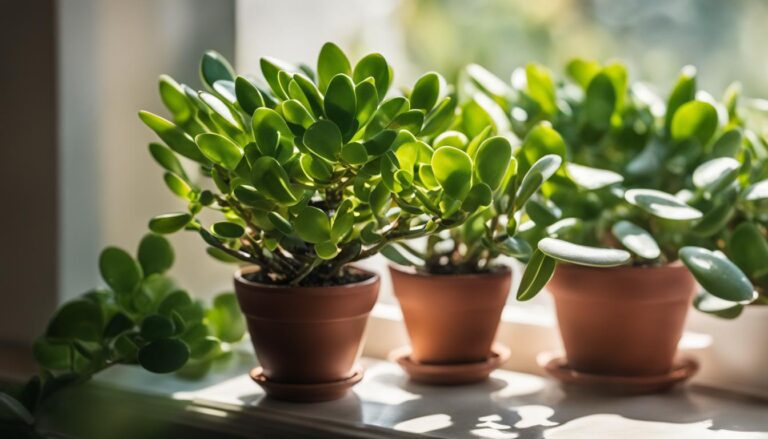
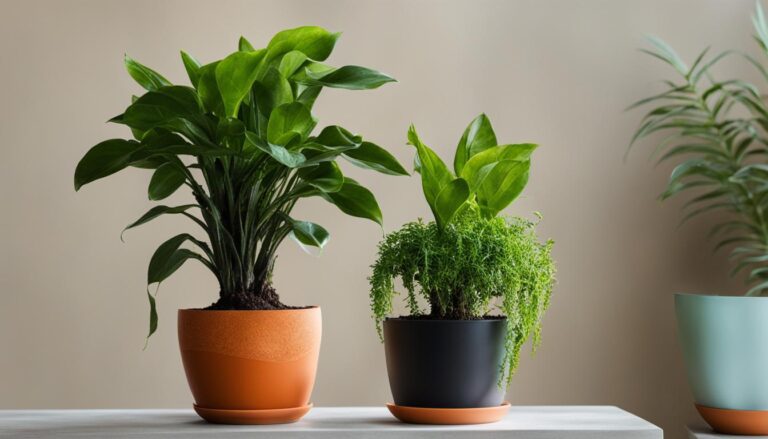
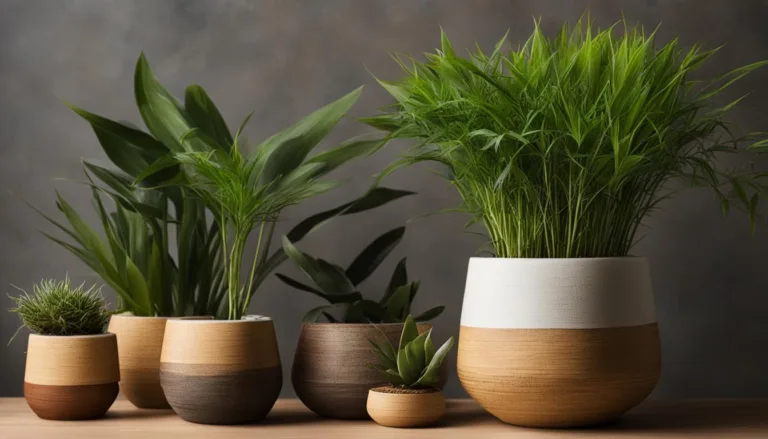
One Comment
Comments are closed.